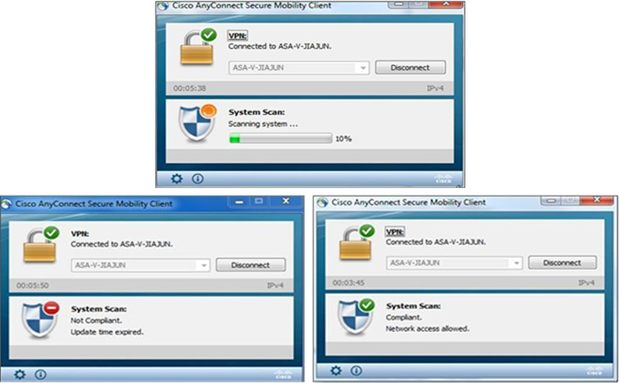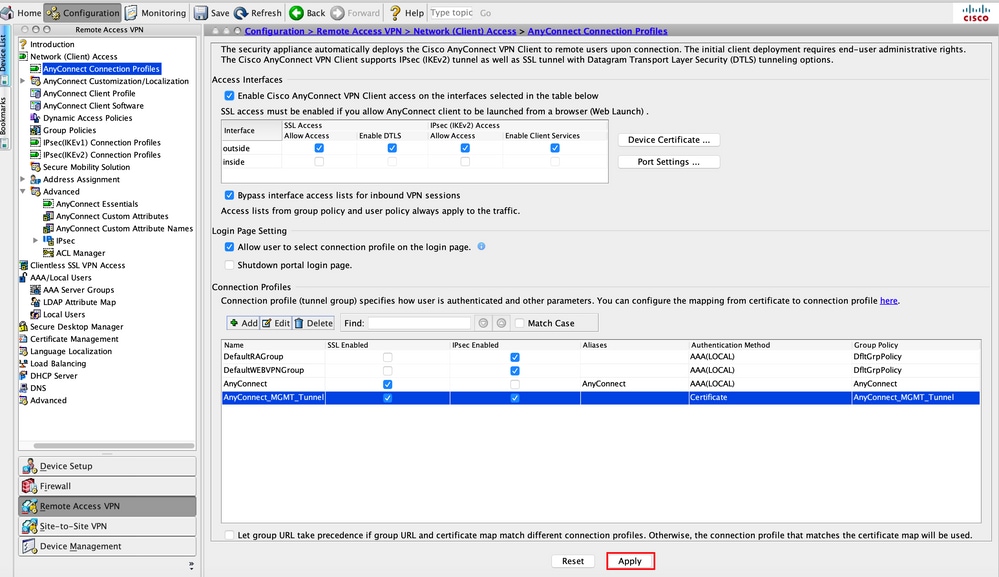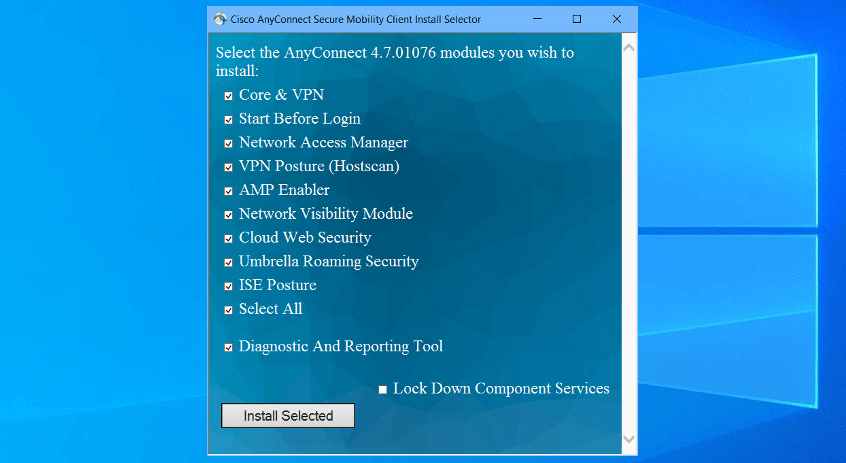Cisco Anyconnect Vpn Type

Installing the VPN
Uninstalling the VPN
Connecting to VPN | Disconnect from VPN
Connecting to FULL VPN | Disconnect from FULL VPN

Installing the Cisco AnyConnect VPN Client
Download the Cisco AnyConnect VPN Client for Windows installer.
Enter the CougarNet credentials.
Click Login.
Select AnyConnect on lower left side of this window.
- Click Start AnyConnect.
Click Download for Windows.
- The download will complete on the lower left hand side of the screen as seen here.
Microsoft Edge:
Google Chrome: Double-click the AnyConnect.exe file. (Note: You may encounter a Security Warning screen and must click Run to proceed.)
Click Next.
Accept the terms for the License Agreement.
Click Next.
Click Install.
- Allow access from user account control as seen here by clicking Yes.
Once the VPN Client is installed and the message below appears, click Finish.

Uninstalling VPN - Windows 10
1. Click Search Bar on lower left hand of screen, type uninstall. Double click Add or Remove Programs.
The latest iteration (v2.3.4) of the Cisco Secure Firewall Migration Tool adds public beta support for S2S VPN migrations from ASA: Policy-based (crypto map) Pre-Shared key authentication type VPN configuration to Firepower Management Center VP. The mostly used vpn software from cisco is probably the Cisco AnyConnect Secure Mobility Client. To save a connection the client uses a xml-file with the format described in the file AnyConnectProfile.xsd which is available in your AnyConnect installation directory.
3. Select CISCO AnyConnect Secure Mobility Client, then click uninstall.
4. Click uninstall again.
5. Click Yes to uninstall.
6. The CISCO AnyConnect Client has been removed from your computer.
Connecting to the UH VPN

This is for users that need to access UH secure network resources from off campus.
- Launch the Cisco AnyConnect Secure Mobility Client.If you don't see Cisco AnyConnect Secure Mobility Client in the list of programs, navigate to Cisco > Cisco AnyConnect Secure Mobility Client.
- Type vpn.uh.edu.
Click Connect.
Enter the following information and then click OK:
- Group: UHVPN
- Username: your COUGARNET ID
- Password: your COUGARNET password
Note: Once the VPN connection is established, a message displays in the lower-right corner of your screen, informing you that you are now connected to the VPN.
Disconnect from the UH VPN
In the notification area, click the Cisco AnyConnect icon if it is displayed. Otherwise, go to your list of programs and click Cisco AnyConnect Secure Mobility Client.
At the prompt, click Disconnect.
Connecting to the Full UH VPN
This is for users that need to access web-based journals and databases licensed by UH Libraries.
- Launch the Cisco AnyConnect Secure Mobility Client.If you don't see Cisco AnyConnect Secure Mobility Client in the list of programs, navigate to Cisco > Cisco AnyConnect Secure Mobility Client.
- Type full-vpn.uh.edu.
Click Connect.
Select and enter the following information and then click OK:
- Group: Select full-vpn from the dropdown
- Username: your COUGARNET ID
- Password: your COUGARNET password
Note: Once the VPN connection is established, a message displays in the lower-right corner of your screen, informing you that you are now connected to the VPN.
Disconnect from the Full UH VPN
In the notification area, click the Cisco AnyConnect icon if it is displayed. Otherwise, go to your list of programs and click Cisco AnyConnect Secure Mobility Client.
At the prompt, click Disconnect.
Overview
Stanford's VPN allows you to connect to Stanford's network as if you were on campus, making access to restricted services possible. To connect to the VPN from your Windows computer you need to install the Cisco AnyConnect VPN client.
Two types of VPN are available:
- Default Stanford (split-tunnel). When using Stanford's VPN from home, we generally recommend using the Default Stanford split-tunnel VPN. This routes and encrypts all traffic going to Stanford sites and systems through the Stanford network as if you were on campus. All non-Stanford traffic proceeds to its destination directly.
- Full Traffic (non-split-tunnel). This encrypts all internet traffic from your computer but may inadvertently block you from using resources on your local network, such as a networked printer at home. If you are traveling or using wi-fi in an untrusted location like a coffee shop or hotel, you may wish to encrypt all of your internet traffic through the Full Traffic non-split-tunnel VPN to provide an additional layer of security.
You can select the type of VPN you want to use each time you connect to the Stanford Public VPN.
Install the VPN client
Cisco Anyconnect Password
- Download the Cisco AnyConnect VPN for Windows installer.
- Double-click the InstallAnyConnect.exe file.
- When a message saying the Cisco AnyConnect client has been installed, click OK.
Connect to the Stanford VPN
- Launch the Cisco AnyConnect Secure Mobility Client client.
If you don't see Cisco AnyConnect Secure Mobility Client in the list of programs, navigate to Cisco > Cisco AnyConnect Secure Mobility Client. - When prompted for a VPN, enter su-vpn.stanford.edu and then click Connect.
- Enter the following information and then click OK:
- Group: select Default Stanford split- tunnel (non-Stanford traffic flows normally on an unencrypted internet connection) or Full Traffic non-split-tunnel (all internet traffic flows through the VPN connection)
- Username: your SUNet ID
- Password: your SUNet ID password
- Next, the prompt for two-step authentication displays. Enter a passcode or enter the number that corresponds to another option(in this example, enter 1 to authenticate using Duo Push to an iPad). Then click Continue.
- You may have to scroll down the list to see all of your options.
- If your only registered authentication method is printed list, hardware token, or Google Authenticator, the menu does not display. Enter a passcode in the Answer field and click Continue.
- Click Accept to connect to the Stanford Public VPN service.
- Once the VPN connection is established, a message displays in the lower-right corner of your screen, informing you that you are now connected to the VPN.
Disconnect from the Stanford VPN
Cisco Vpn Failed To Connect
- In the notification area, click the Cisco AnyConnect icon if it is displayed. Otherwise, go to your list of programs and click Cisco AnyConnect Secure Mobility Client.
- At the prompt, click Disconnect.
